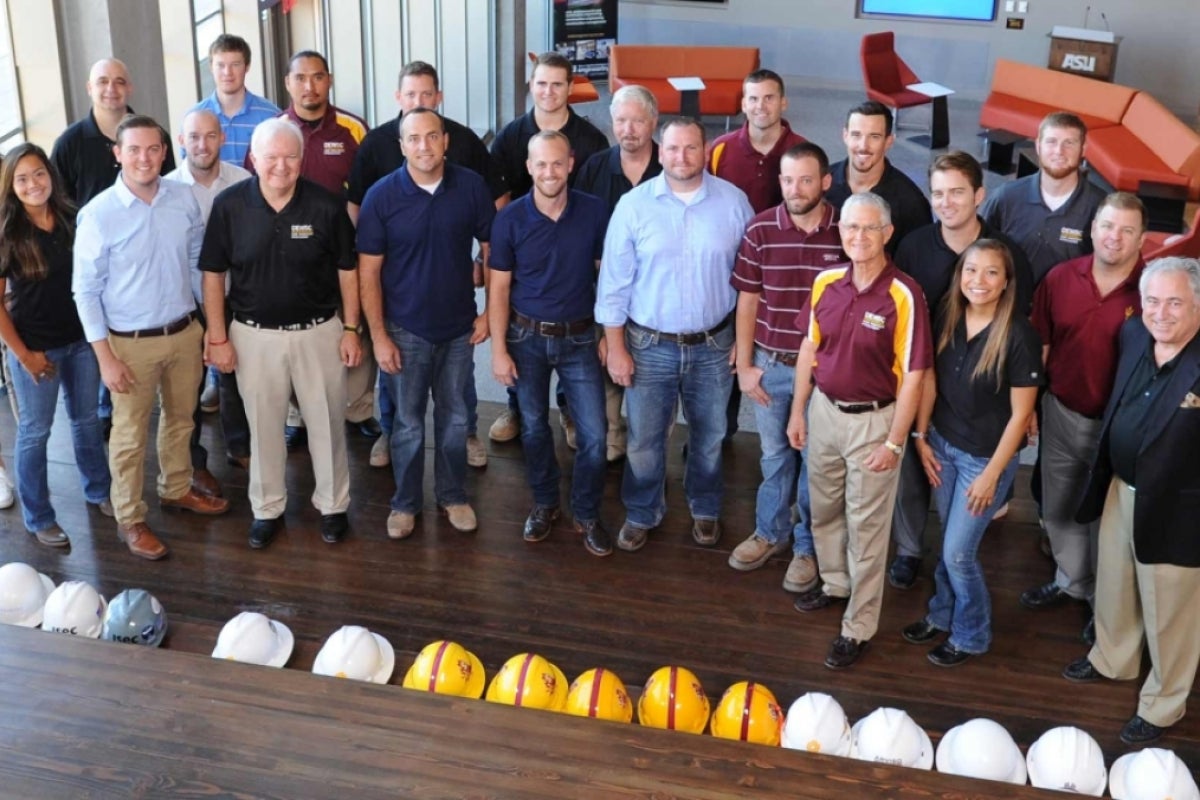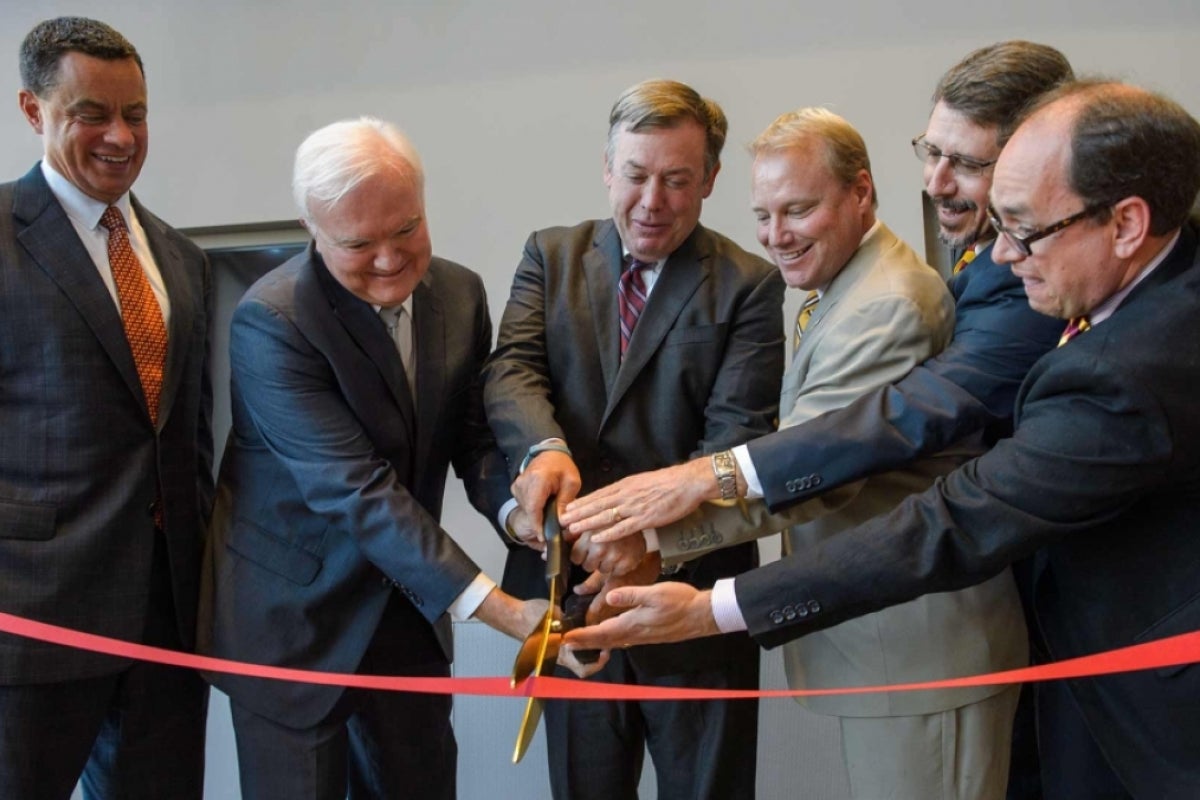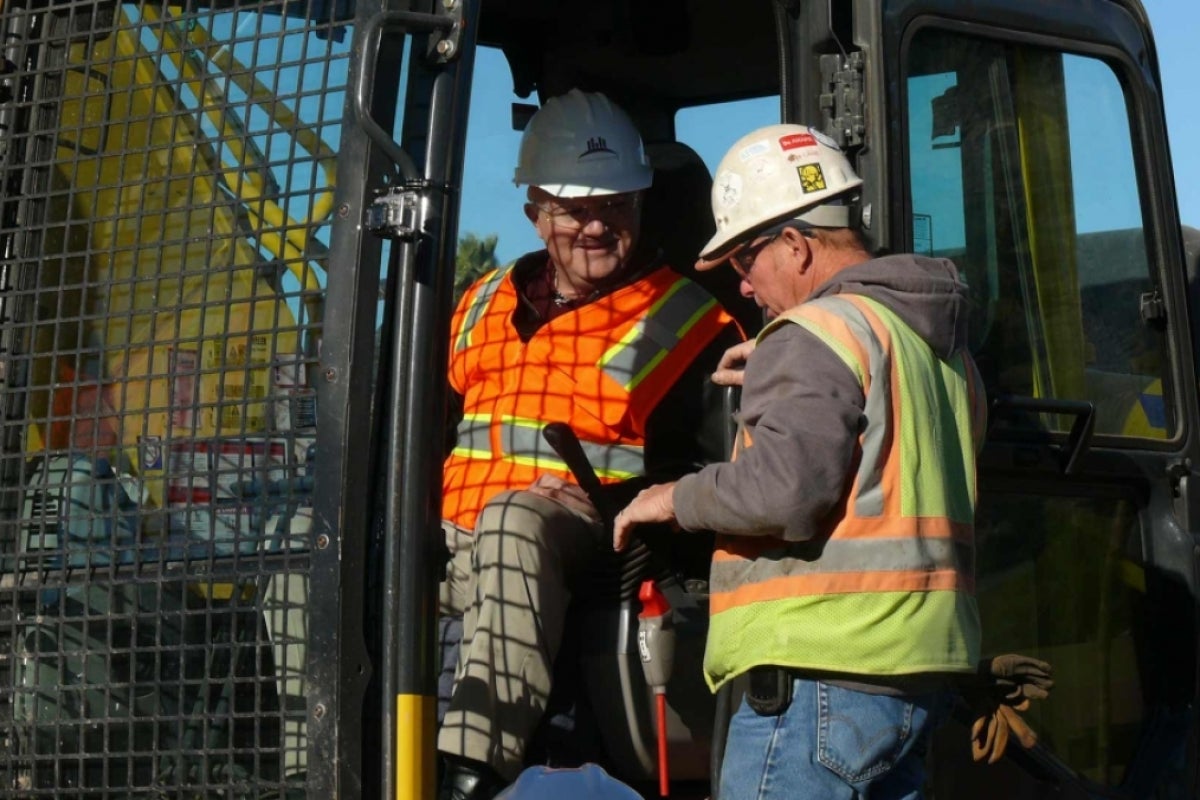Building a lasting legacy

George Edward "Edd" Gibson is preparing to retire from ASU after leading the School of Sustainable Engineering and the Built Environment for more than a decade after its founding.
He spent almost a decade at the helm of the School of Sustainable Engineering and the Built Environment at Arizona State University, serving as a champion of civil, environmental and sustainable engineering degree programs as well as construction management and construction engineering degree programs.
Now George Edward “Edd” Gibson Jr. says it’s time to explore life outside of academia.
“After 34 years teaching, researching and providing services at the university level, I just felt it was time to move on to other challenges,” he says.
Gibson, a professor and the Sunstate Chair of Construction Management and Engineering, joined ASU in 2009 as the program chair for the Del E. Webb School of Construction. Just a year later, he followed founding director Paul Westerhoff to become the interim director and later director of the School of Sustainable Engineering and the Built Environment, holding the position until 2018.
“Edd served as the director in its critical formative years,” says Ram Pendyala, the current director of the School of Sustainable Engineering and the Built Environment. “He provided outstanding leadership in bringing two formerly separate units together under the auspices of a single interdisciplinary school, recruited an outstanding cadre of faculty and presided over a period of significant growth and prosperity.”
Pendyala says Gibson put the school on a path to success, particularly by dedicating himself to building College Avenue Commons, the hub of the school that will serve as its signature collaborative learning space for many years to come.
“The legacy that he has built will stand the test of time and serve as a beacon of hope and inspiration for many who seek to follow in his footsteps,” Pendyala says.
Keep reading to learn more about Gibson’s impact on the engineering community in his own words — both at ASU and beyond.
Education
Question: Where did you get your start in construction management and construction engineering?
Answer: I started working construction in high school and continued that during the summers in college. I operated heavy equipment and eventually served as a foreman on a bridge-building crew. My university degree was focused on civil engineering as there weren’t many construction programs around back then. However, I got to work in construction from day one as I commissioned as a lieutenant in the U.S. Army Corps of Engineers the same day I graduated from Auburn University. I enjoyed getting to build roads, bridges, maintenance facilities, housing and airfields. I wanted to be involved in that work for the rest of my career.
Q: What led you to pursue teaching?
A: When I exited the Army, there were not a lot of jobs for civil engineers, as the economy was in a downturn. So I went to work in manufacturing at Texas Instruments. I was asked to teach classes in statistical process control and total quality management to employees. In the end, I liked teaching, left manufacturing and returned to school to get a PhD in civil engineering with a focus on construction so that I could teach and get back into the area I enjoyed more.
Q: You have had the opportunity to work with thousands of students during your time as a professor. What has been the best part of that experience?
A: Being on the podium and interacting with the students in and outside the classroom was the best part. I appreciated working with young students who were open to learning. I also enjoyed helping students work through challenging situations to be able to achieve their goals and dreams. The worst part was grading papers and tests.
Research
Q: What has your area of focus in the construction industry been all these years? Has it changed as the industry evolved?
A: I started out in computer technology and wrote one of the first journal papers on what is now known in the construction industry as building information modeling. As my career advanced, I have evolved my research focus to be at the leading edge of what is important to industry. It’s a process that requires talking to practitioners and finding out what is important to them. As a result, I focused heavily on early project planning, safety systems and culture, alternative project delivery, alternative dispute resolution and advanced project controls. I feel fortunate to have attracted almost $11.5 million in funded studies over the past 30 years (not inflation adjusted). I am most proud of the fact that my work has been adopted by practitioners in the engineering and construction industry around the globe, and I have been fortunate to have interfaced with project teams who were using my work on all seven continents.
Q: What do you see for the future of this research/work?
A: I think the future of my work is evolutionary. Hopefully, I have laid the foundation for the next generation of researchers who have the same use-inspired focus that I have. They need to listen to industry to find out what is needed and continue to help our industry become safer and more efficient.
Building the school
Q: What was it like to be a director of the school at its start? What did the school look and feel like?
A: It was challenging. We were trying to combine complementary programs and staff who had not worked together before. The dean and president were supportive of the direction that I wanted to focus on. It took a lot of work to align people, programs and attitudes so that we were moving forward. I was fortunate to be able to hire around 40 faculty members, which helped change the culture and push forward the momentum of the new school. I took mentoring young faculty very seriously because they were the future of the school. Our alumni and corporate partners were very supportive, and I raised more than $23 million in philanthropic gifts that allowed us the extra funds to do great things.
Q: A big highlight in the growth of the school is the building of College Avenue Commons and the input current and former construction students had on the project. What was the process of getting it off the ground and what was the end result of seeing it finished?
A: Exhausting! From the time I arrived on campus in August 2009 to when the building opened in July 2014, there was not one day that I did not do something to move the project forward. The alumni were passionate about the project, and we had 82 donors who wanted to know how things were going. The downturn in the economy had put the project on hold, but I kept pushing for it, raising money, getting donors to recommit and looking for options.
We solicited student input during planning and design, and our students were working as interns on the project. It’s probably safe to say every student in the program during that time toured the project multiple times. In addition, the on-site project team members were all Del E. Webb School of Construction graduates, and many of the designers were ASU graduates as well. The project was a labor of love and won seven regional and national project awards. It still holds up well, and our foresight in developing flexibility in the spaces became a model for ASU projects afterward.
Read more: College Avenue Commons — A monument to innovation and construction
Q: Who are some leaders at ASU or beyond that have aided in your career from the time you were the school’s director until now?
A: I think first and foremost was Paul Johnson, the dean of the Ira A. Fulton Schools of Engineering during a big portion of my time as director. He listened to my ideas and in many cases provided the resources and management support for our school to make rapid advances. He was great to work with and very supportive of starting three new academic programs — sustainable engineering, construction engineering and environmental engineering — during my tenure.
Another person at ASU who I enjoyed working with was Mike Remedi. He was a terrific fundraiser who kept me on track and was critical in our move to excellence.
I also worked with a number of our industry supporters in the greater Phoenix area to help keep us moving forward. The person who was most helpful outside of ASU was Wink Ames, who was an executive at Minard-Ames. He was awesome to work with, knew everyone and was honest with what he thought of my ideas and our direction.
Collaboration
Q: What does collaboration mean to you looking back at your time here at ASU?
A: Collaboration was absolutely key. It meant bringing people face to face around an open table on a regular basis. I worked with so many staff members, faculty, alums and students, and nothing we accomplished could have been done without all of their work and dedication. I would like to give a strong shoutout to staff members Alicia Stiers, Judy Reedy, Susan Garrison and Mike Sever, who were there the entire time I was director. They were outstanding and always made me look good.
Q: Are there any special organizations that stand out in supporting your career?
A: I have been fortunate to have a long association with the American Society of Civil Engineers, the Construction Industry Institute, the National Academy of Construction, the National Academies of Science, Engineering and Medicine and the U.S. Department of Energy. Each has had a huge influence on the trajectory of my career.
Read more: Gibson’s legacy of construction earns Distinguished Member honor
Read more: Gibson appointed to Board on Infrastructure and the Constructed Environment
Looking to the future
Q: What is next for you?
A: Well, my retirement from academia is at the end of the year. It will be brief, as I take over as president and CEO of the National Academy of Construction starting Jan. 1, 2023. Being at the helm of a nonprofit and helping it grow, mature and do great things will be an exciting challenge.
Q: Any parting words that you want to share?
A: The school is much better when everyone is working together in a complementary manner. Having civil engineering, construction management, construction engineering, sustainable engineering and environmental engineering under the same umbrella happens nowhere else on the planet. If done right, this structure provides opportunities for economy of scale and collaborations that other places only dream about. I wish the school the best of luck in the future, and I thank everyone who supported me and our journey over the past 13 years.
More Science and technology

ASU water polo player defends the goal — and our data
Marie Rudasics is the last line of defense.Six players advance across the pool with a single objective in mind: making sure that…

Diagnosing data corruption
You are in your doctor’s office for your annual physical and you notice the change. This year, your doctor no longer has your…
Large-scale study reveals true impact of ASU VR lab on science education
Students at Arizona State University love the Dreamscape Learn virtual reality biology experiences, and the intense engagement it…




